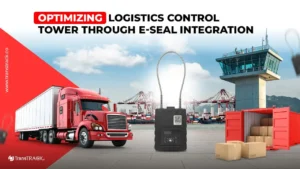Know 8 Logistics Planning Strategies and Their Components!
Posted on July 15, 2024 by Nur Wachda Mihmidati

Logistics planning is the process of organizing and managing the flow of goods, information, and other resources from the point of origin to the point of destination in the most efficient and effective manner. The main objective of logistics planning is to ensure that the goods or services reach the customer on time, at minimal cost, and in good condition.
Effective logistics planning can help companies increase customer satisfaction, reduce operational costs, and improve overall efficiency. Check out this TransTRACK article for a more detailed explanation!
What are the components of logistics planning?
The components of logistics planning include various aspects that need to be organized and managed efficiently. Here is a more detailed explanation of each of the mentioned components:
Raw Material Procurement
Raw material procurement involves selecting suppliers who can provide quality materials at reasonable prices. Contract negotiations set terms such as price and delivery time to ensure timely supply. Inventory management is important to avoid shortages or overstocks.
Transportation and Shipping
Transportation and shipping includes selecting an efficient shipping method such as land, sea, or air. Optimal routing reduces shipping time and costs. Tracking technology ensures goods arrive on time and helps troubleshoot problems along the way.
Storage and Warehouse Management
Storage and warehouse management involves organizing warehouse layouts for efficient access and management of goods. Warehouse management systems (WMS) are used to track and manage inventory. Warehouse security is important to protect goods from the risk of theft or damage.
Distribution and Last-Mile Delivery
Distribution and last-mile delivery organize the distribution network so that goods reach their final destination efficiently. Final delivery management focuses on delivering goods from distribution centers to customers. Customer service is required to provide information and handle delivery-related issues.
What are the stages of logistics planning?
The logistics planning stage generally involves several key steps that ensure the logistics system functions properly and efficiently. Below is an explanation of each step:
Logistics Needs Analysis
This stage involves identifying and assessing the logistics needs of the company, including market demand and product types. The analysis includes an evaluation of transportation, storage, and raw material procurement needs. The results of the analysis help determine the appropriate logistics strategy.
Logistics Strategy Development
In this stage, a logistics strategy is designed to optimize cost, time, and resources. This involves the selection of delivery methods, warehouse arrangements, and inventory management. The strategy also includes the selection of technologies that support logistics operations.
Logistics Plan Implementation
This stage involves implementing the designed strategy, including the implementation of inventory management systems and transportation mode arrangements. Implementation involves coordination between departments and external partners as well as staff training. Initial monitoring was conducted to ensure the plan was on track.
Logistics Performance Monitoring and Evaluation
After implementation, logistics performance is monitored and evaluated to ensure the system is functioning properly. Performance data is collected and analyzed to compare results with set goals. Evaluation helps identify areas that require improvement and strategy adjustments.
Why is logistics planning important?
Logistics planning is essential for the following reasons:
Operational Efficiency
Logistics planning optimizes the use of resources such as transportation and storage, reducing wastage. This improves efficiency and reduces overall operating costs.
Improved Customer Service
With good planning, goods or services can reach customers on time and in good condition. This increases customer satisfaction and strengthens the company’s reputation.
Risk Management
Logistics planning helps identify and manage risks in the supply chain, such as transportation disruptions or problems with suppliers. This allows companies to respond quickly and reduce the impact of problems.
Cost Control
Effective planning helps control and reduce procurement, storage, and distribution costs. It allows companies to set realistic budgets and better monitor spending.
Competitive Advantage
Good logistics planning improves a company’s efficiency and responsiveness. It provides a competitive advantage by allowing the company to respond to market changes faster and better than competitors.
Use of Technology and Innovation
Logistics planning often involves the latest technology and innovative solutions to improve processes. This helps companies stay competitive in an ever-evolving market.
Logistics planning strategy
Logistics planning strategies involve the approaches and methods used to efficiently manage the flow of goods, information, and resources. Here are some of the key strategies in logistics planning:
Just-in-Time (JIT)
This strategy focuses on reducing inventory and storage costs by receiving raw materials and products only when they are needed in the production process. This reduces the need for warehouse space and increases efficiency, but requires excellent coordination with suppliers.
Just-in-Case (JIC)
In contrast to JIT, this strategy involves holding large amounts of inventory in anticipation of possible disruptions or fluctuations in demand. This provides additional security against the risk of stock shortages but may increase storage costs.
Cross-Docking
In this strategy, goods received at the distribution center are directly transferred to the delivery vehicle without going through the storage process. This reduces handling time and storage costs, and speeds up the distribution process.
Supply Chain Management
This strategy involves the coordination and integration of all activities in the supply chain, from suppliers to end customers. The goal is to increase efficiency, reduce costs, and improve customer service through better collaboration between all parties involved.
Route and Schedule Optimization
This strategy involves planning optimal transportation routes and delivery schedules to reduce fuel costs and travel time. The use of mapping and route planning software can help in identifying the most efficient routes.
Technology and Automation
Integrating technologies such as warehouse management systems (WMS), transportation management systems (TMS), and tracking technologies can improve operational efficiency and supply chain visibility. Automation in processes such as picking and packing can reduce errors and increase speed.
Data and Performance Analysis
This strategy involves collecting and analyzing data to monitor logistics performance and identify areas for improvement. The use of key performance indicators (KPIs) and data analysis helps in making data-driven decisions and improving logistics processes.
Sustainability
Focus on environmentally friendly practices such as carbon footprint reduction, use of recyclable packaging, and energy efficiency. Sustainability strategies not only help protect the environment but can also enhance a company’s reputation.
Each of these strategies can be implemented individually or in combination depending on the company’s needs and objectives.
Effective logistics planning requires the integration of the right strategies and the use of advanced technology to achieve maximum efficiency. TransTRACK’s Warehouse Management System (WMS) offers innovative solutions to better manage warehouse operations, improve accuracy, and optimize the flow of goods.
If you’re looking to optimize your warehouse management and accelerate your logistics processes, consider implementing a WMS from TransTRACK. Contact us today to get a demo and see how our solutions can improve your operational efficiency and meet your company’s logistics needs.
Topic :
Recommended Articles

 Bahasa Indonesia
Bahasa Indonesia








